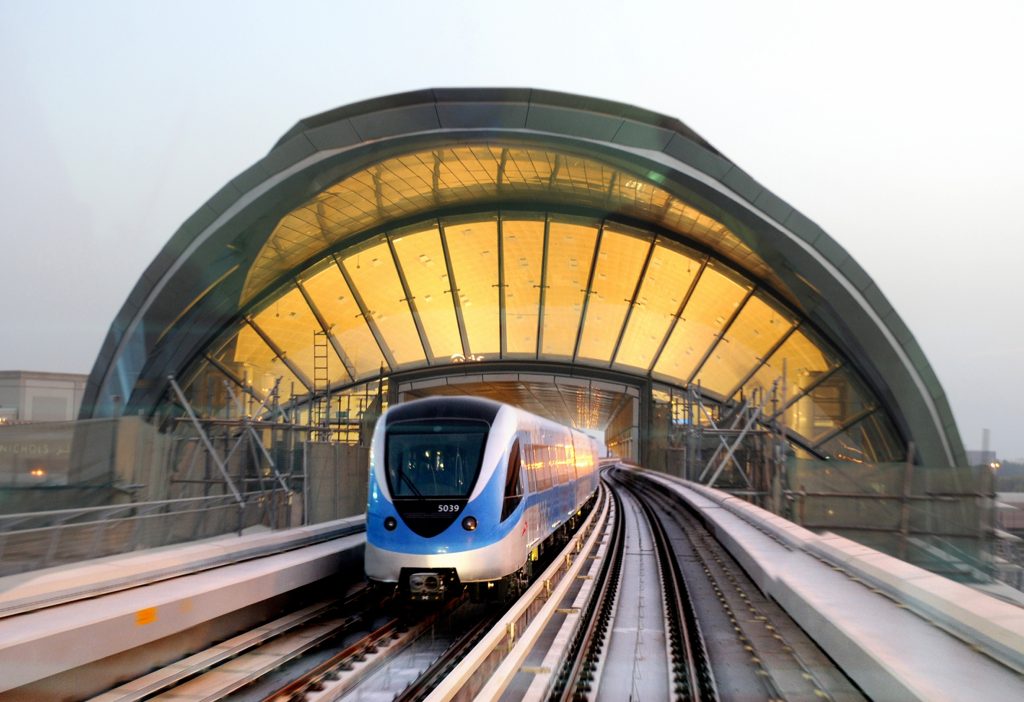Accumulated benefits of Dubai Metro in the period between its establishment in 2009 and end of 2016 reached AED66bn ($18bn) compared to accumulated capital and operational costs of about AED41bn, i.e. the cost-benefit ratio reached 1.6 by the end of 2016, a report said.
Dubai Roads and Transport Authority (RTA) has carried out a comprehensive study on the Economic Impact of the Dubai Metro Project, including both its Red and Green Lines, in collaboration with Henley Business School, University of Reading, one of the longest-established universities in the UK. The study analysed the direct and indirect economic benefits of the metro and calculated the internationally recognised economic indicators in this regard including the benefit-cost ratio.
Mattar Al Tayer, director general and chairman of RTA, said: “At a time when RTA celebrates the ninth anniversary of Dubai Metro, this study underlines Dubai’s keenness to invest in improving and widening its infrastructure, since it is the backbone of driving the competitiveness of cities and countries.
“The infrastructure in general and roads in particular play a massive role in supporting economic, social and tourist activities, boosting the integration of the local economy, and enhancing GDP. The Dubai Government is aware of the paramount importance of investment in infrastructure, and the government has therefore consistently maintained this policy. As a result, the emirate’s investments in roads and transport infrastructure have touched AED100bn.
“Such a trend has been rewarded with clear dividends that have propelled the competitiveness of the emirate and the UAE in general, making Dubai a global benchmark for the quality of infrastructure. The remarkable roads network of the emirate was instrumental in the UAE achieving “Number One” ranking in the quality of roads worldwide for four years in a row (2014-2017), according to the Global Competitiveness Reports of the World Economic Forum. The sustained improvement of roads, as well as transit systems and services witnessed by Dubai since the establishment of the RTA in 2005 have generated savings of as much as AED125bn in the cost of fuel and time.”
Socio-economic benefits
The study examined the capital and operational costs of the metro and matched them to the financial benefits of the project in the form of tariff revenues, increase in operational jobs, and appreciation in the value of properties in the surroundings of the metro stations. Material benefits also include increasing consumer surplus of metro users, raising foreign investment, reducing mobility and vehicle operation costs, curbing carbon emissions, decreasing traffic accidents, cutting road maintenance costs, and boosting employment prospects.
The study also analysed the contents of 14,270 press articles and reports published locally and abroad between 2000 and 2016 to gauge public perceptions surrounding the Dubai Metro and its role in raising the profile of the city as a premier global tourist hub. To examine the impact of the metro on urbanisation in Dubai, analysis and comparisons of aerial maps of areas surrounding Dubai Metro were carried out for the 2005 – 2017 period. In addition to the local information input, the study relied on various information sources and data including the review of more than 400 studies and technical reports worldwide.
World-class standards
It is estimated that the accumulated benefits in 2020 and 2030 would be AED115bn and AED234bn respectively, whereas the capital and operational costs for the same years were estimated at AED45bn and AED54bn respectively. It follows that the cost-benefit ratio for the said years will be 2.5 and 4.3 respectively. This means that every dirham spent on the Dubai Metro has yielded a return of 1.6 dirhams to the economy of the emirate in 2016, and this return will shoot to 2.5 dirhams and 4.3 dirhams in 2020 and 2030 respectively.
Al Tayer commented that such figures illustrate the huge impact of the Metro on the economy of the Emirate. These results are consistent with the findings of similar global studies albeit the variation in the cost-benefit ratio from one city to another depends on the timeline of studies commissioned, types of benefits covered in the analysis, discount rate applied, and the cost of materials and labour involved.
For example, the benefit-cost ratio of Athena Metro – Line 4 was estimated at 1.17 in a 30-year study. In Sweden, the ratio of Stockholm Metro ranged from 6.5 to 8.5 in a study spanning for 50 years, and in Ireland, the ratio of Dublin Express Train ranged from 2.1 to 2.7 in a 32-year study.
“There is international consensus about the vitality of continuing the improvement and maintenance of infrastructure to achieve sustainable development. There is a kind of investment rivalry in this regard. The quality of roads and transport infrastructure represents one of the key measures of global competitiveness. An example that pops up here is that the US spends more than $100bn on the improvement, maintenance and rehabilitation of the infrastructure p.a. and Canada expends about $30bn p.a. for the same purpose” concluded Al Tayer.

